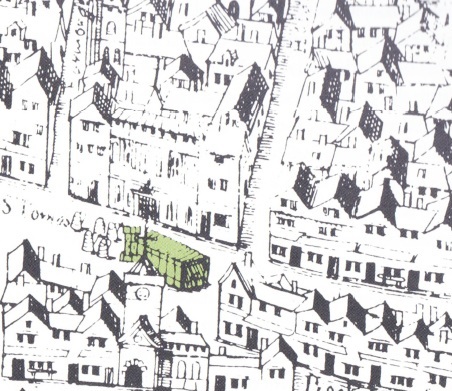So, what about the Oubliette?
If you've been to a castle you've probably been shown a hole in the floor with the claim that it was an oubliette; a dungeon you were thrown in from the top and then LEFT TO DIE.
Truly the stuff of nightmares, I remember shivering when told this.
If you've been to a castle you've probably been shown a hole in the floor with the claim that it was an oubliette; a dungeon you were thrown in from the top and then LEFT TO DIE.
Truly the stuff of nightmares, I remember shivering when told this.

Just imagine it... thrown into a tiny room, the trapdoor closing and then its just you, in the dark, waiting to die of thirst or madness.
BUT... were they really a thing?
Some castles didn't even have regular dungeons, they needed basements for storage, space is precious!
BUT... were they really a thing?
Some castles didn't even have regular dungeons, they needed basements for storage, space is precious!

And some rooms that people once thought were dungeons or oubliettes are now speculated to have been storage rooms, ice cellars or maybe cisterns, part of a water system (!), like this one at the Paris La Bastille: 

Yes there were people locked up in castles and sometimes in dungeons but not as much as you may think.
I remember staying in a dungeon for hours hoping I'd see a prisoner's ghost only for the castle lord to tell me I'd only see ghosts of mice because it was a storage room.
I remember staying in a dungeon for hours hoping I'd see a prisoner's ghost only for the castle lord to tell me I'd only see ghosts of mice because it was a storage room.

Of course castles know that visitors love gruesome stories so they don't mind telling them that a cellar they're not really sure about what it was for may have been an awful dungeon full with Iron Maidens (not a real thing) and such scary objects. 

But back to specifically the oubliette: dungeon with entrance at top where you were dumped in and forgotten about.
Do we have any contemporary records describing them?
Immurement was certainly a punishment, but did custom built oubliettes exist during the middle ages?
Do we have any contemporary records describing them?
Immurement was certainly a punishment, but did custom built oubliettes exist during the middle ages?

Any medieval crime & punishment experts out there with more information?
Anyone, dig in, share what you find!
Oh btw, in Dutch this is called an oublie cone.
And yes, every time I ate an ice cream I think back to that castle guide with his scary stories... ;)
Anyone, dig in, share what you find!
Oh btw, in Dutch this is called an oublie cone.
And yes, every time I ate an ice cream I think back to that castle guide with his scary stories... ;)

• • •
Missing some Tweet in this thread? You can try to
force a refresh

 Read on Twitter
Read on Twitter



















